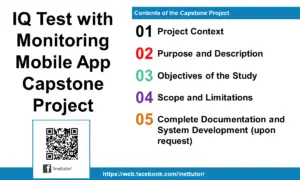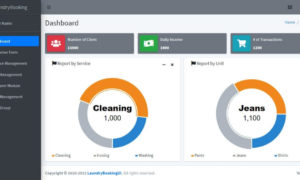Inventory System in PHP and MySQL User Interface
- Inventory System Dashboard Module
Module Description: This module displays quick peek at the necessary and summary details of the system such as sales, adjustment table, predictive days, low stock items, and expiring items.
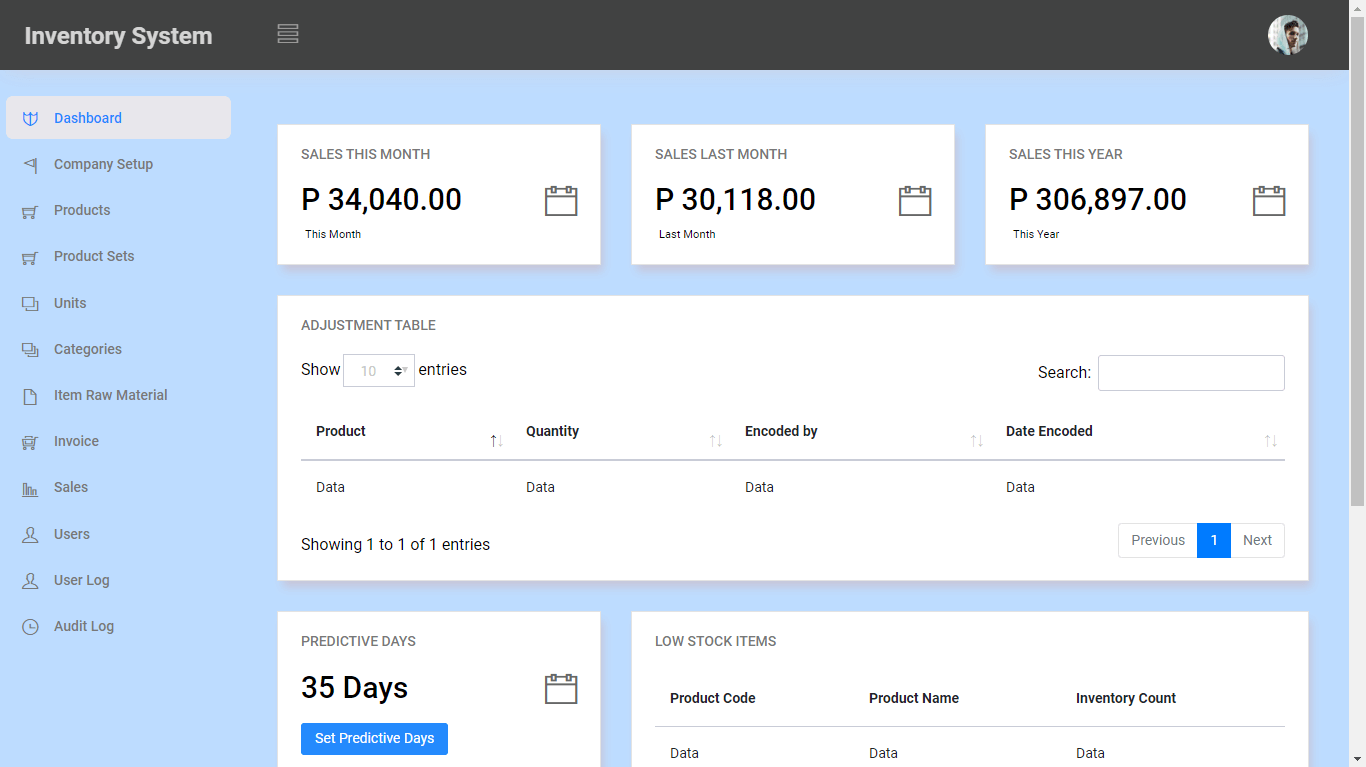
- Inventory System Adjustment Table Module
Module Description: this module displays the records about the adjusted quantity of the products.
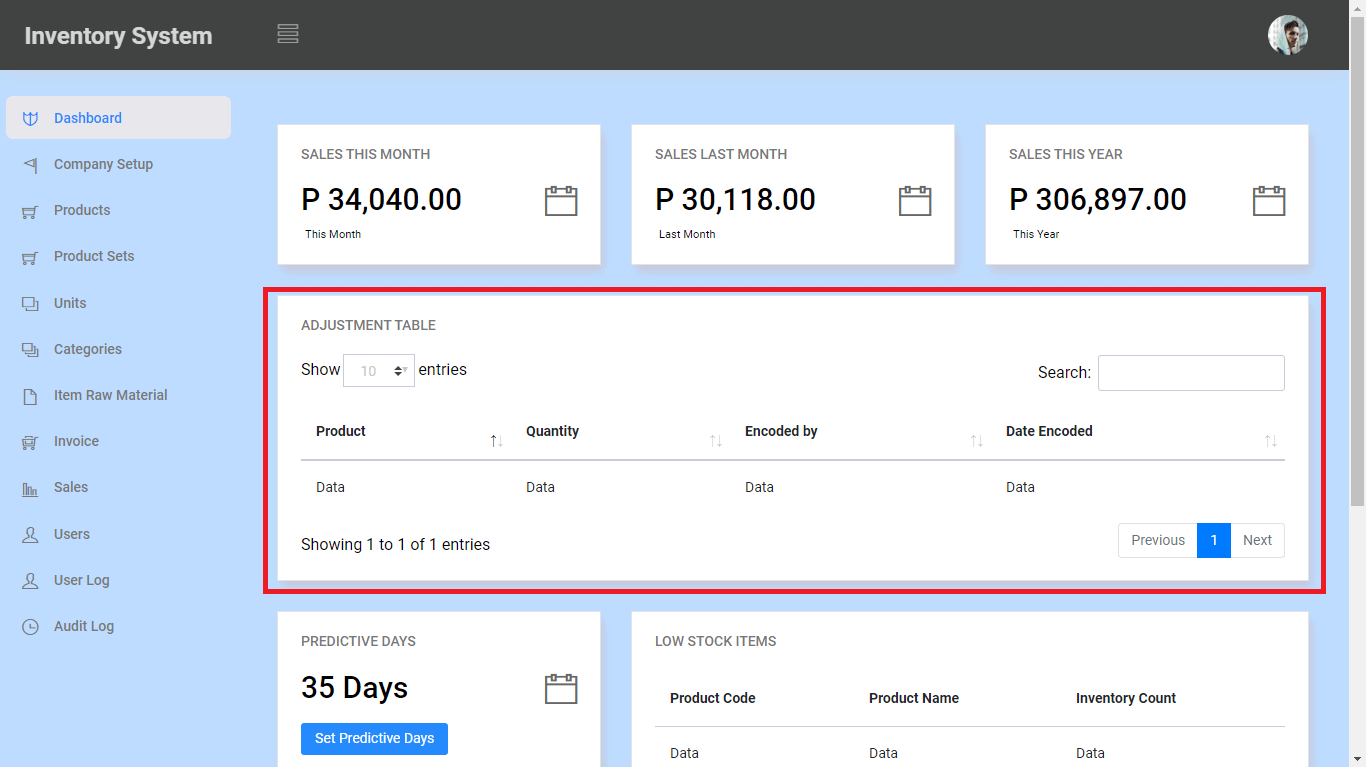
- Inventory System Predictive Days Module
Module Description: This module displays the number of days necessary for the demand planning feature of the project.
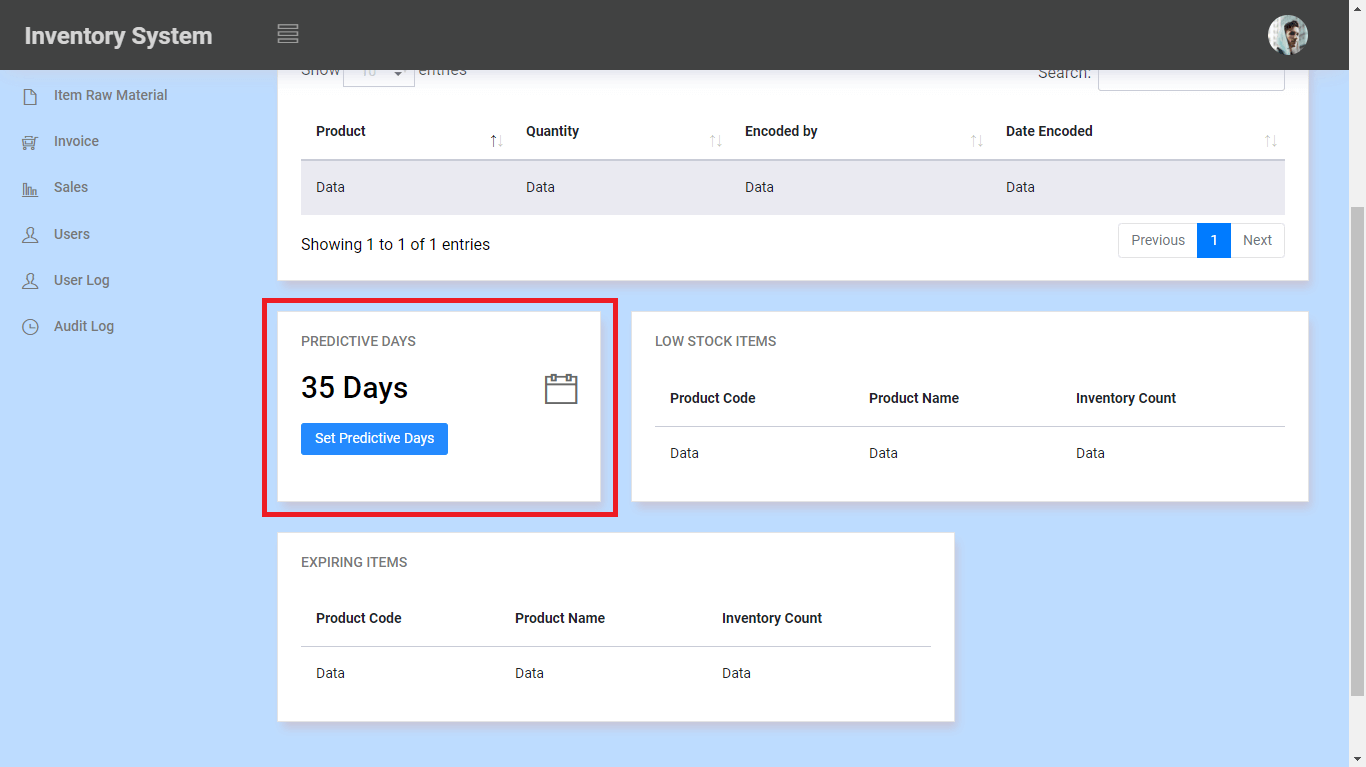
- Inventory System Low Stock Items Module
Module Description: This module displays the low stock items in the system.
Table Fields and Entities: productcode, productname, inventorycount
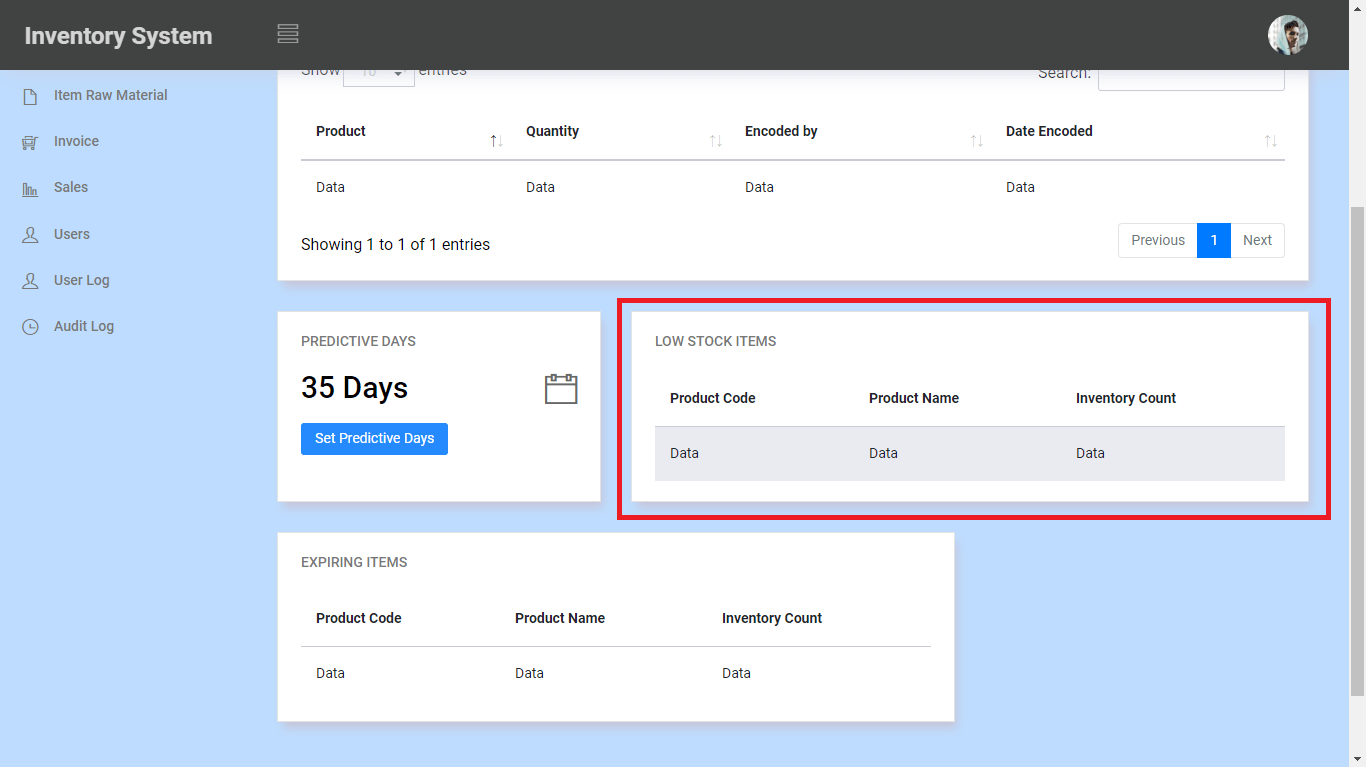
- Inventory System Expiring Items Module
Module Description: This module displays the items that will be expiring soon.
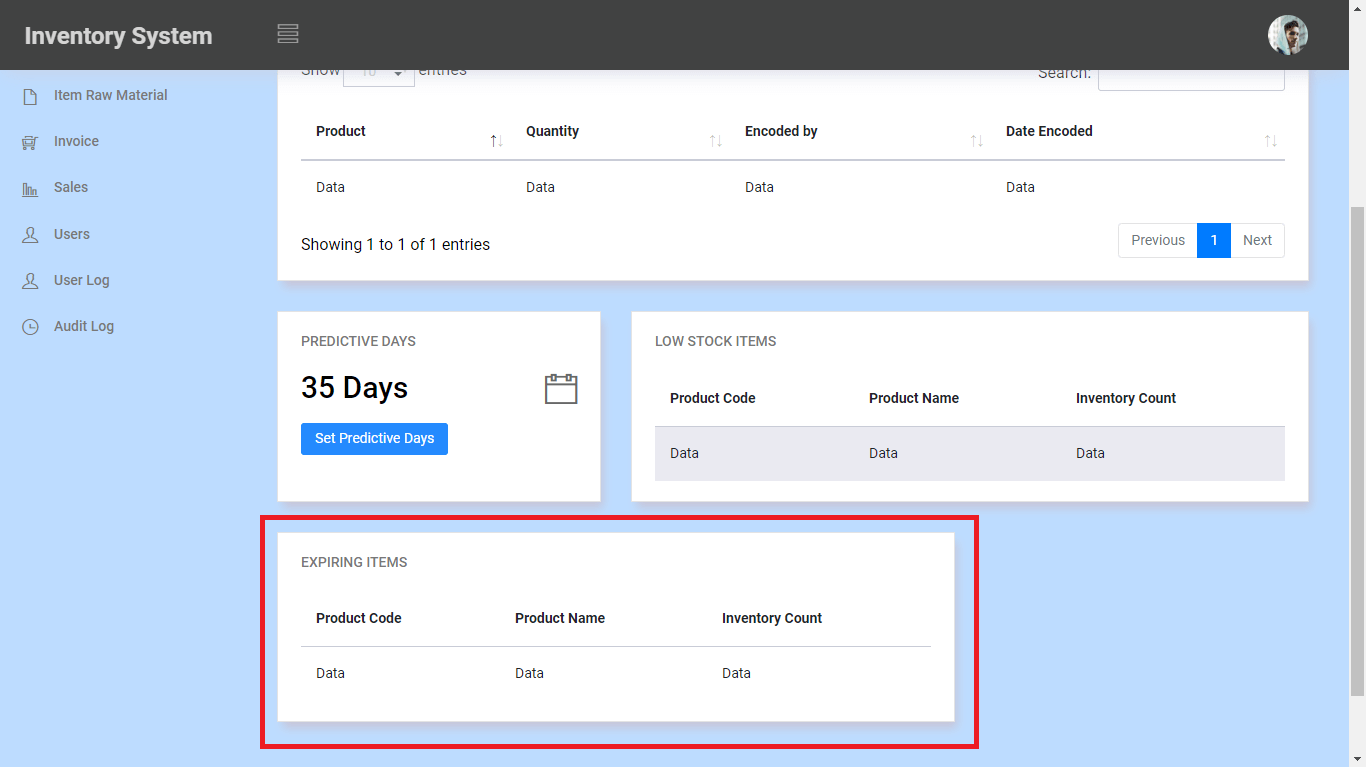
- Inventory System Company Setup Module
Module Description: this module allows the user to set the companys name, address, contact no., and TIN No. that will be reflected on the receipts and other company transactions.
Table Fields and Entities: index, companyname, location, tinno
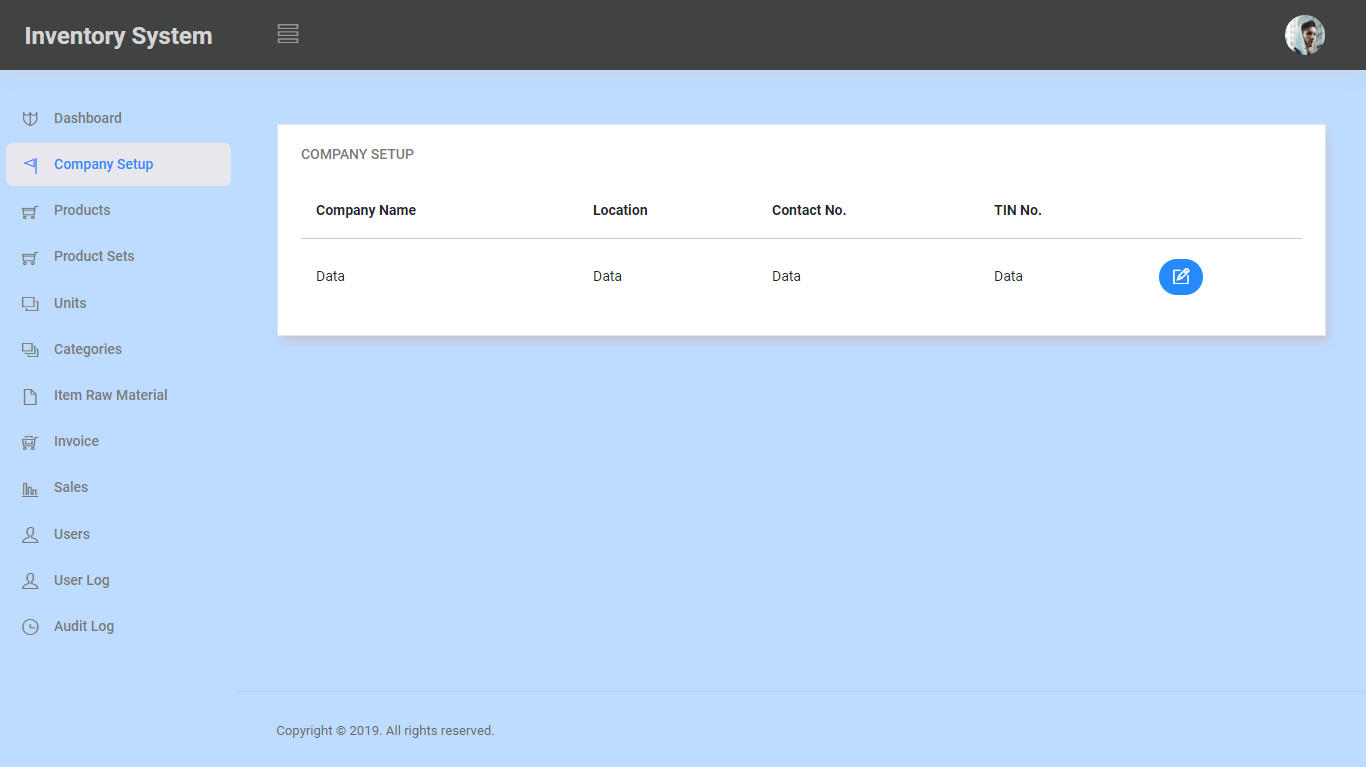
- Inventory System Products Module
Module Description: This module allows the user to add/edit products available. It also display stored/saved products.
Table Fields and Entities: id, itemcode, itemname, variant, unit value, unitid, categoryid, netprice, productioncost, markuppercent, markupprice, discount, discountprice, salesprice, reorderlevel, stocksqty, expirydate, userid, dateencoded.
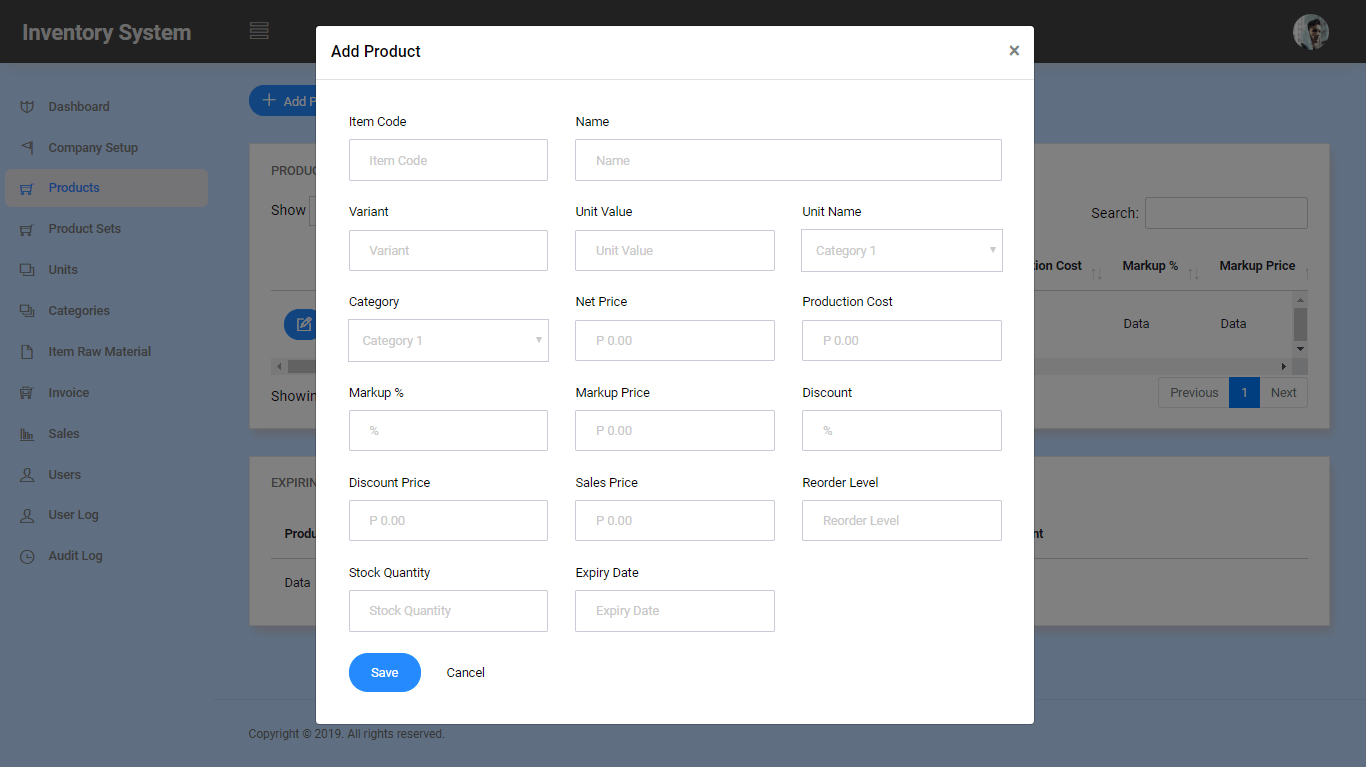
- Inventory System Product set Module
Module Description: Product set module allows the user to store data of combination of two or more products. Data includes the set code, set name, price and the amount.
Table fields and Entities: id, setcode, setname, totalamount, setonhand, userid, dateencoded,
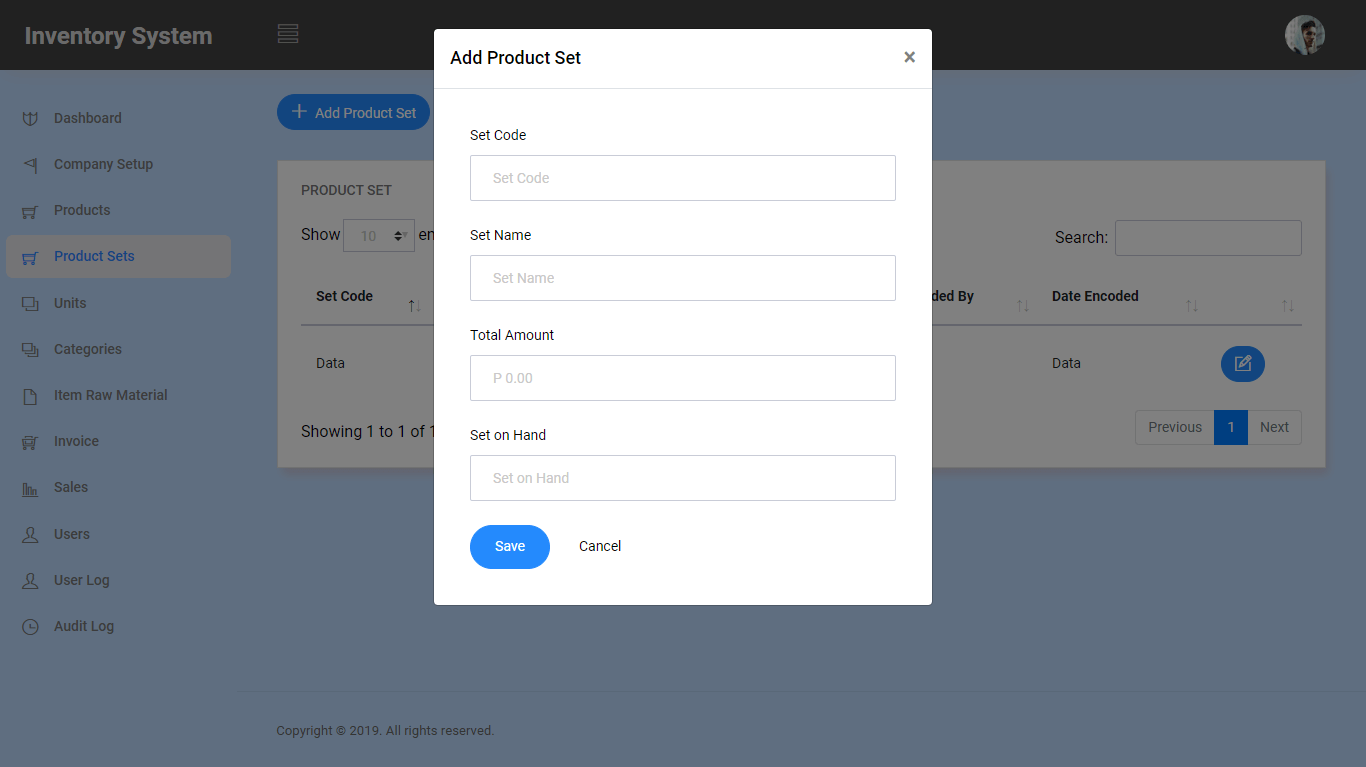
- Inventory System Units Module
Module Description: user can add/edit unit name, description, and this module also displays who encoded and the date the unit is encoded.
Table Fields and Entities: id, UnitName, description, userid, dateencoded
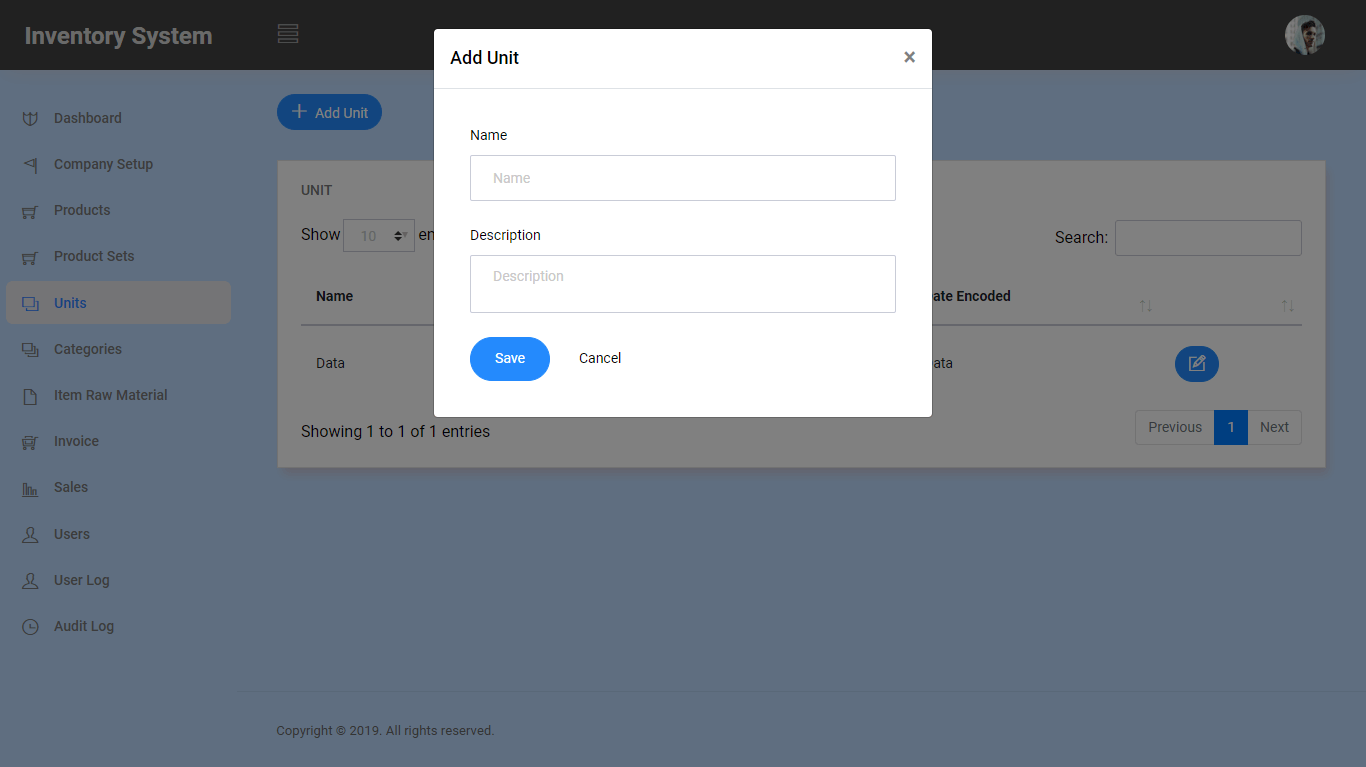
- Inventory System Categories Module
Module Description: this module allows the user to add/edit category information such as name, description, and it also automatically display who encoded and when the data is encoded.
Table Fields and Entities: id, categoryname, description, userid, dateencoded.
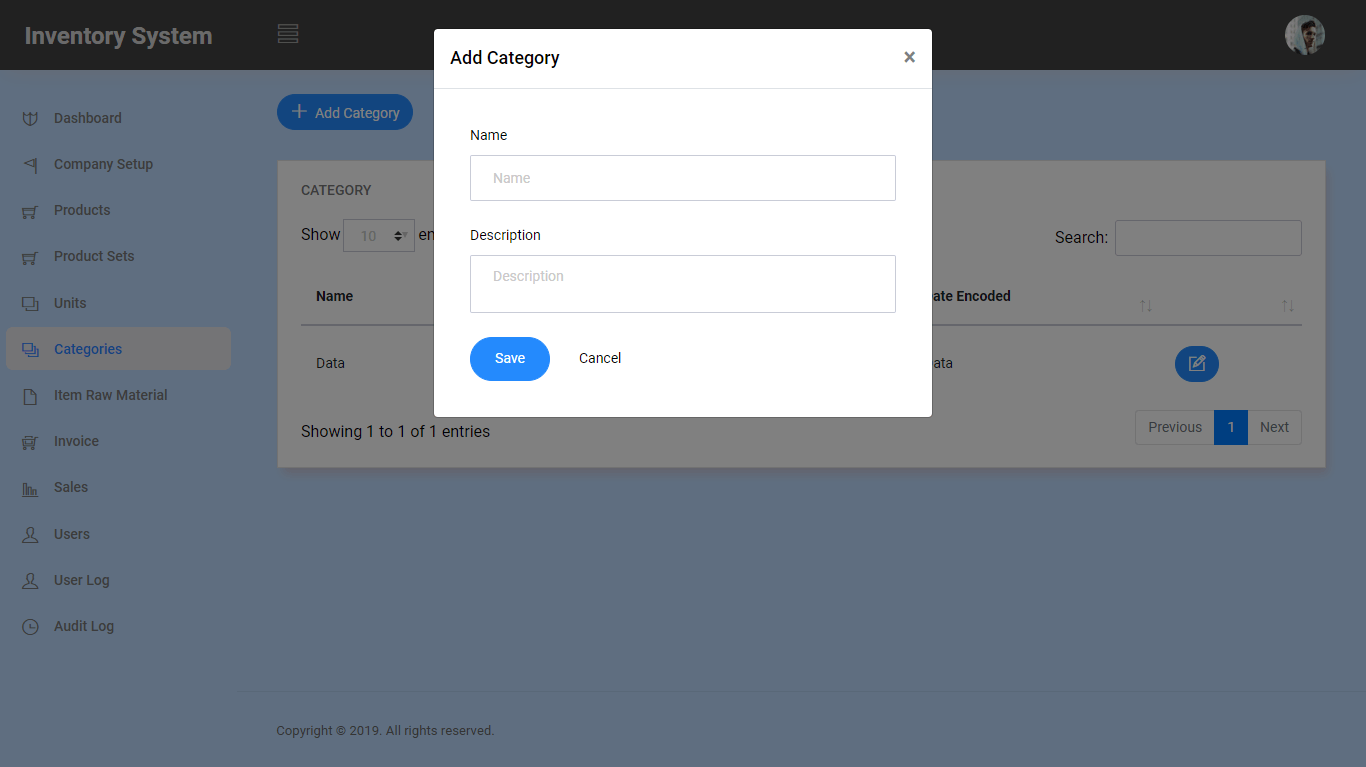
- Inventory System Item Raw Material Module
Module Description: user can add/edit details in the raw material of the product. Details include product name, material name, and amount. This module also displays who encoded and the date encoded.
Table Fields and Entities: id, productid, materialname, amount, userid, dateencoded.
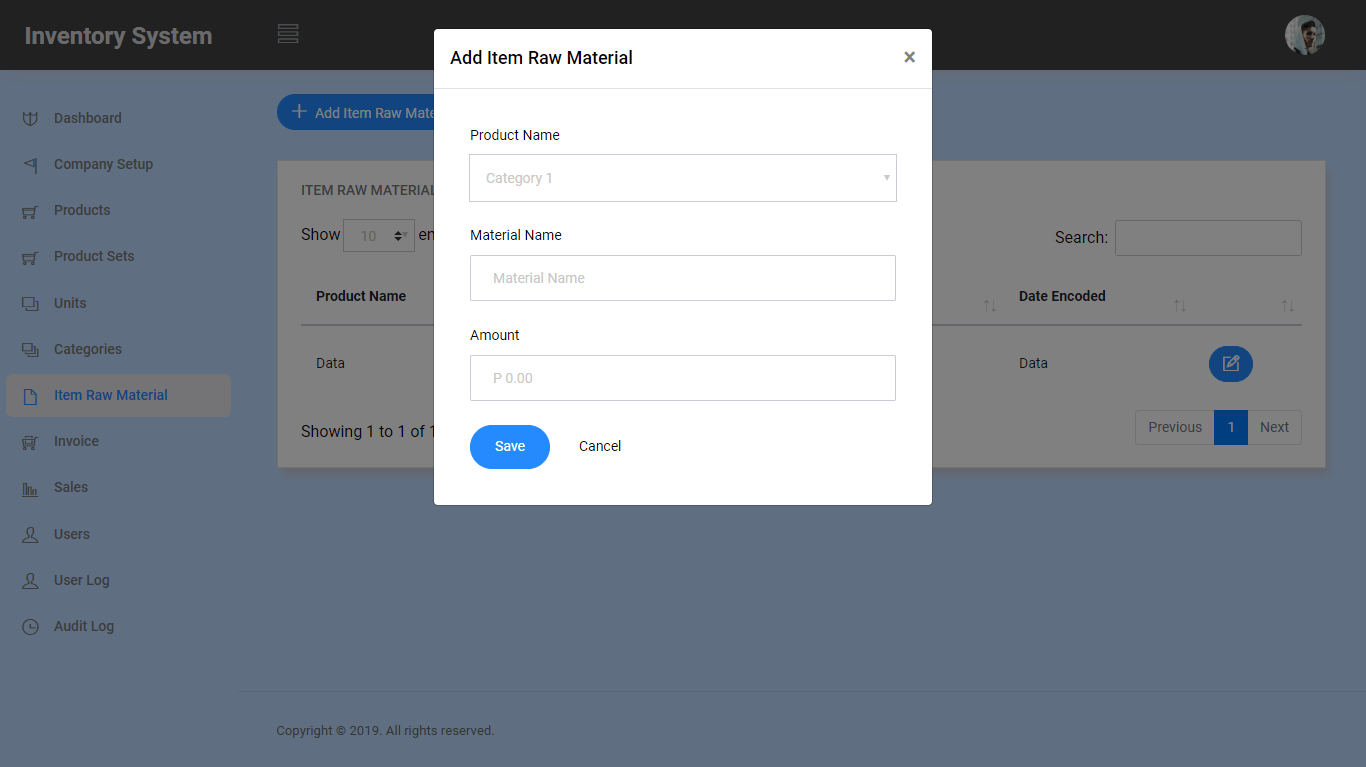
- Inventory System Invoice Module
Module Description: This module allows the user to add invoice. Details include total amount, discount price, tendered, change, and it will automatically reflect who encoded the data and when it was encoded.
Table Fields and Entities: id, userid, totalamount, discountprice, tendered, change, daterecorded.
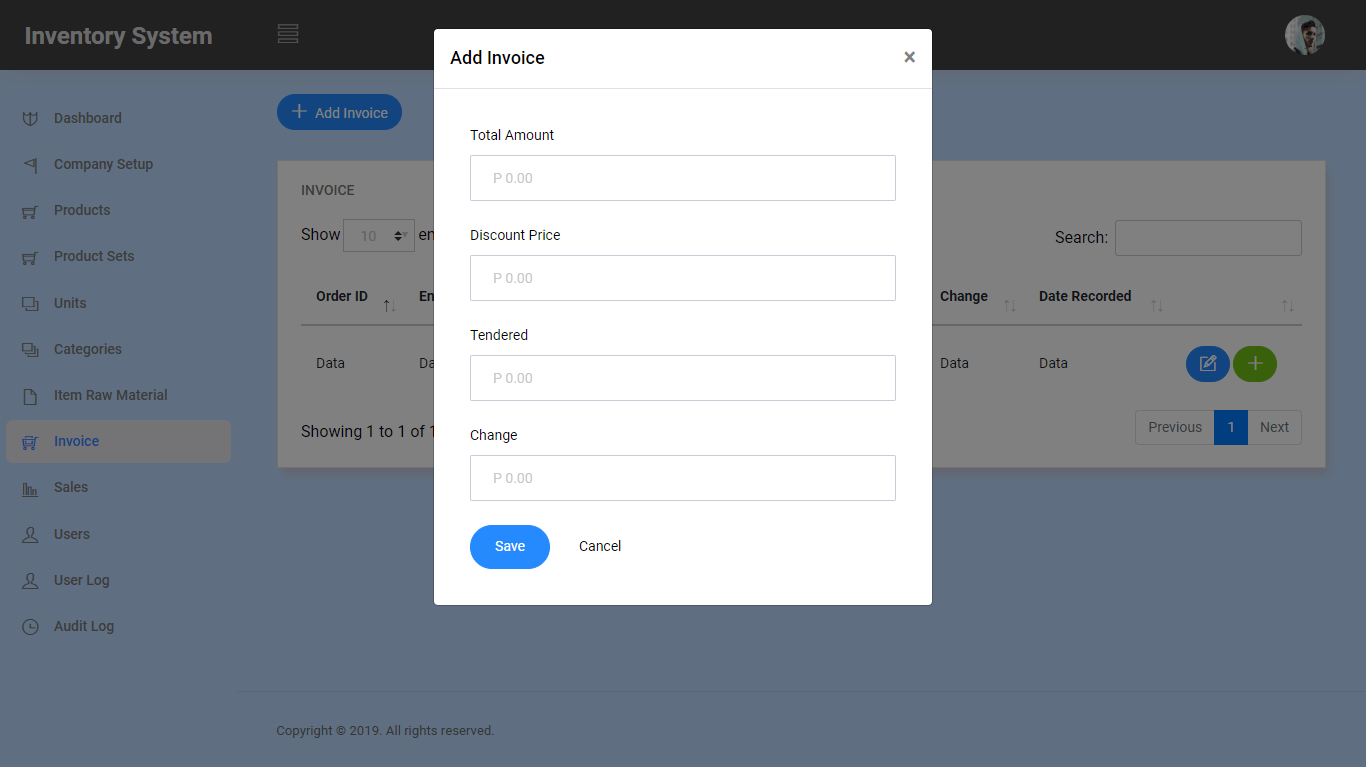
- Inventory System Sales Module
Module Description: This module allows the user to add sales by providing the invoice details, item, sale quantity, and total.
Table Fields and Entities: id, orid, itemid, saleqty, total, userid, daterecorded
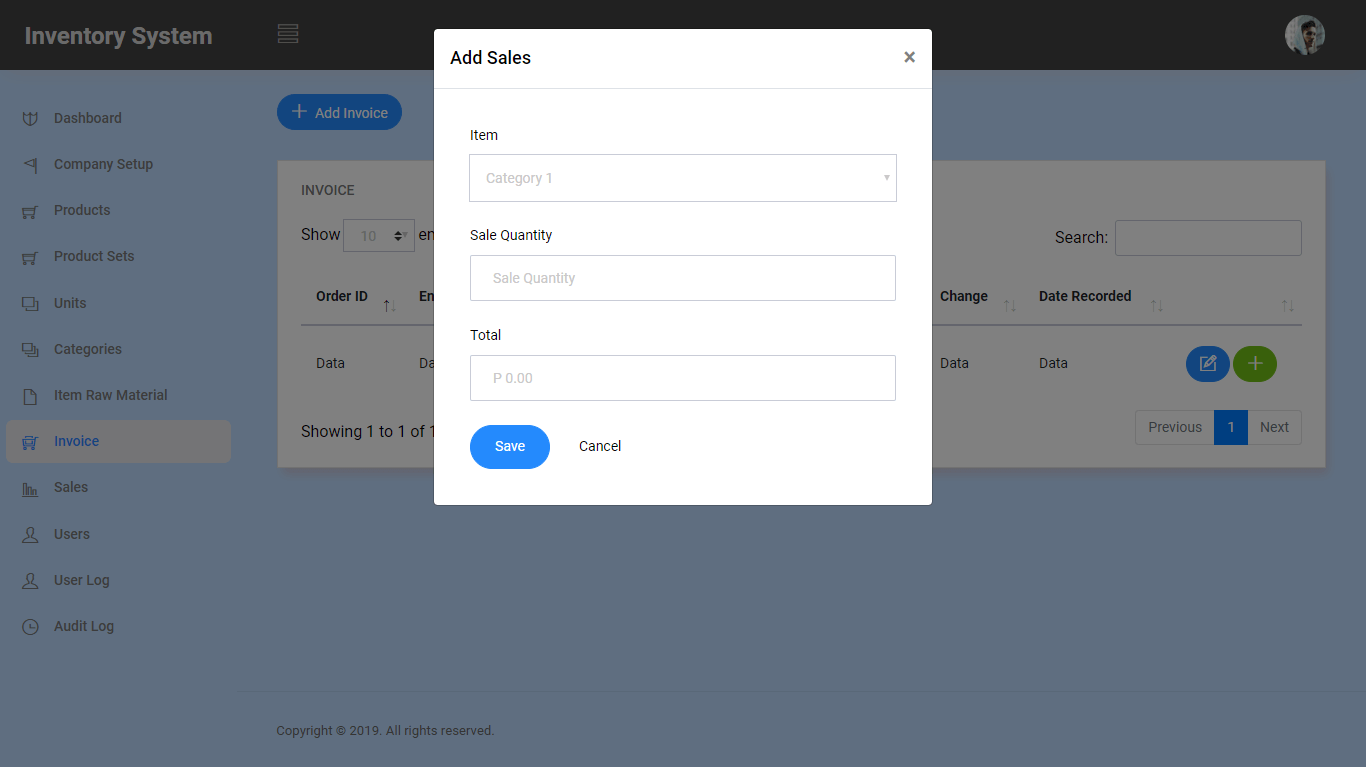
- Inventory System Users Module
Module Description: this module allows the administrator to manage the user of the system by assigning types of account for restrictions and other priviledge.
Table Fields and Entities: id, fullname, username, password, usertype, contact, address
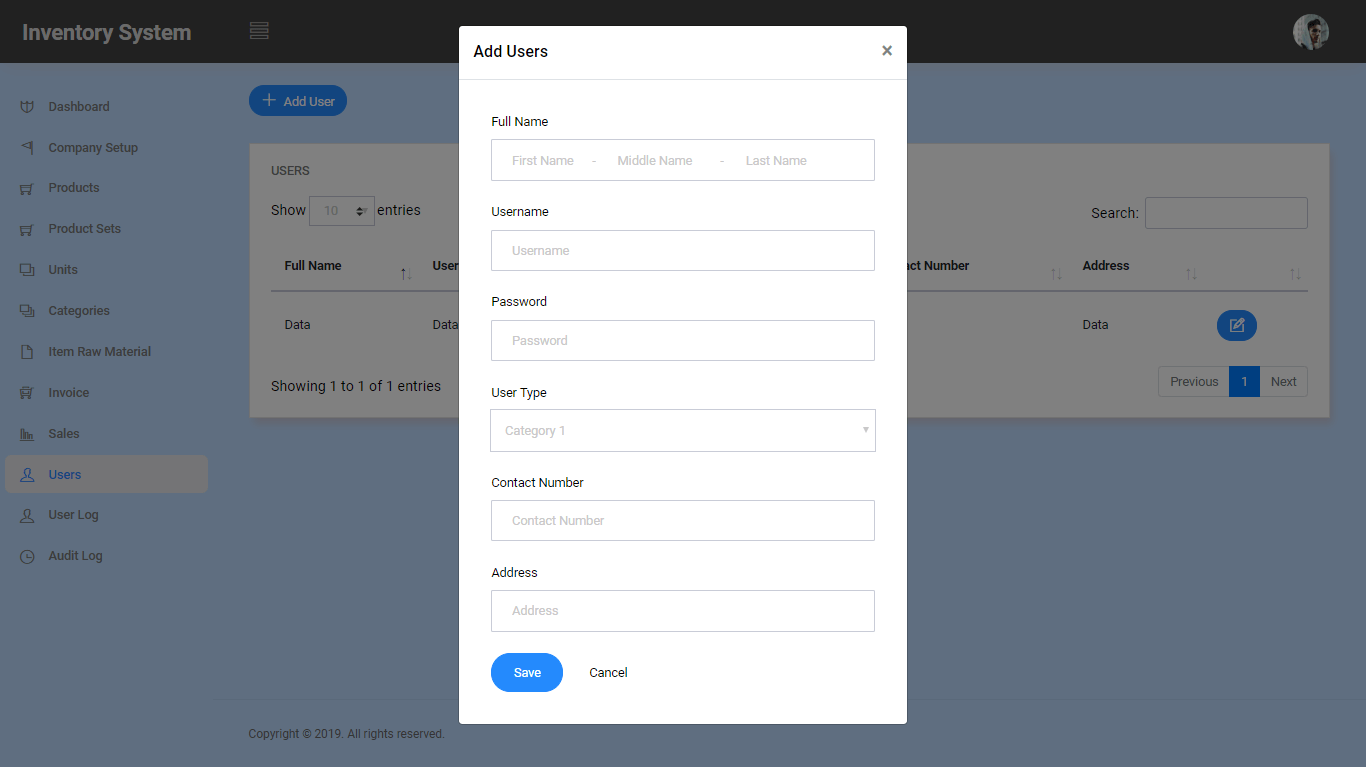
- Inventory System User Log Module
Module Description: This module displays the login and logout of the user of the system.
Table Fields and Entities: id, userid, logintime, logouttime, daterecorded,
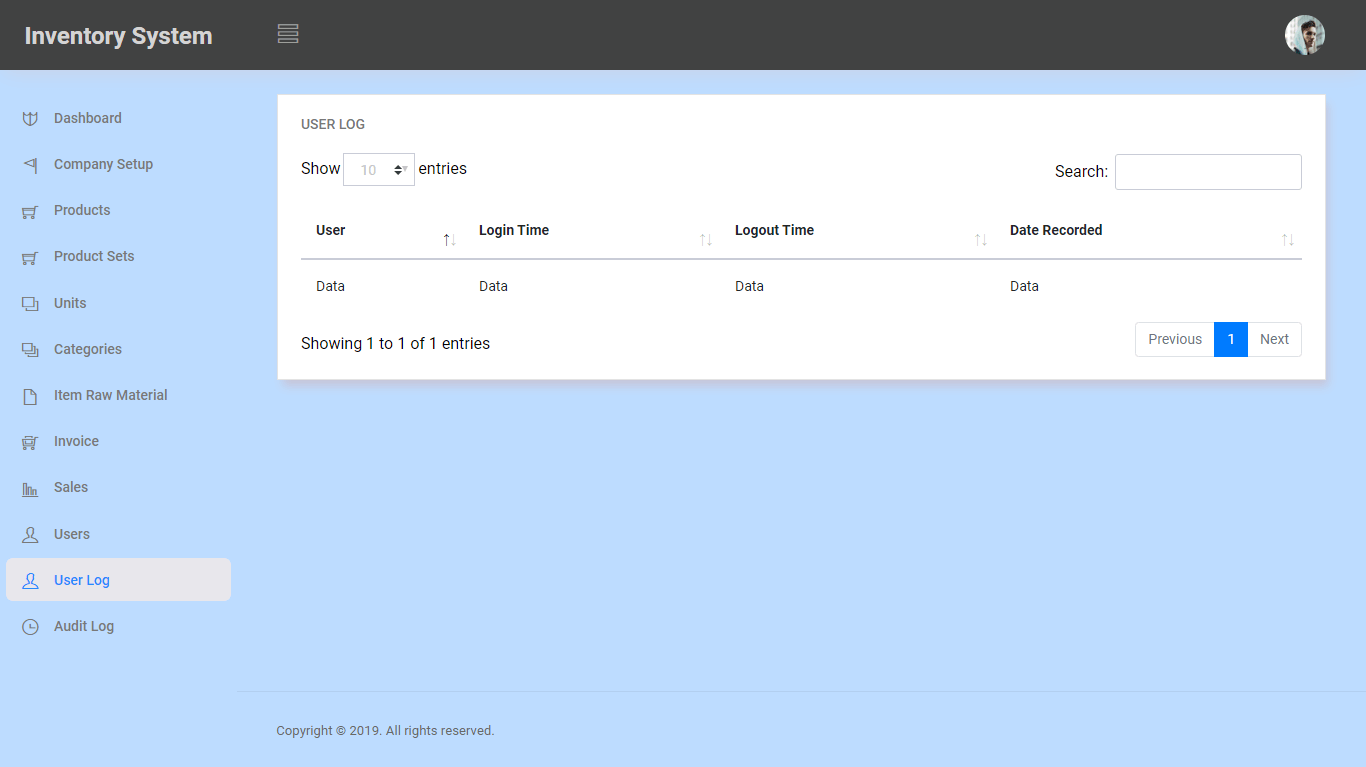
- Inventory System Audit Log Module
Module Description: This module displays the logs/activity of the user.
Table Fields and Entities: id, userid, action, productid, daterecorded
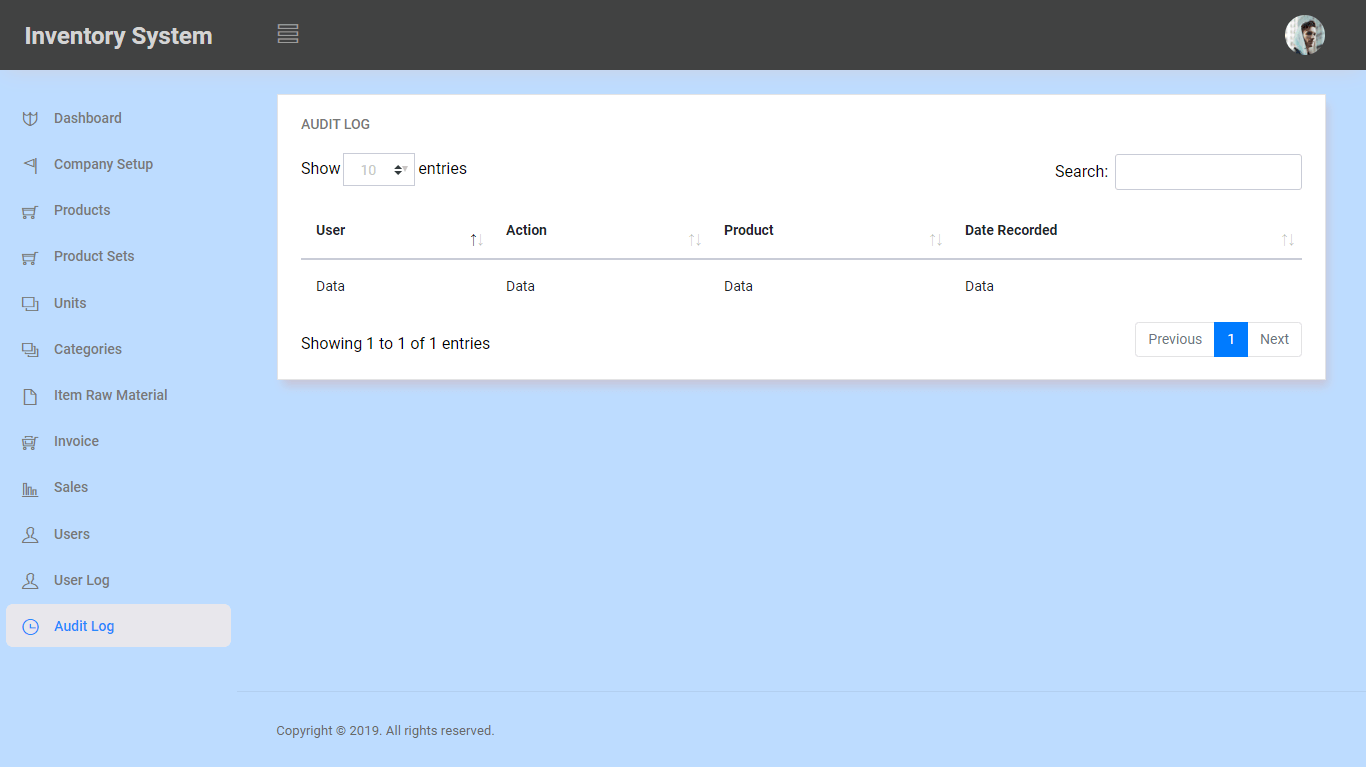
Computerized Inventory Management
According to Thomas M. McHugh (2011), computerized inventory management systems provide, many benefits that are hard to obtain using paper methods or an in-house spreadsheet. Systems that are specific to the lab can be used relatively quickly without a significant learning curve or system customization. The ability to analyse the inventory, item usage, purchasing history, and other areas (e.g. lot umbers, equipment) are important improvements to spreadsheets and paper systems. If the system includes equipment tracking it can be used to determine the capital asset as track the service history and lifespan of equipment. The ability to streamline and automate many of the inventory control task will be increasingly important to reduce hands-on time while improving the analysis of trends, reduce stock outs, and avoiding expiring reagents. The ability to ensure that the right reagent in the right quantity is present at the right time is critical to laboratory operations. Given that reagents are approximately one-half of most labs’ operating budgets, a continued focus on these expenses will assist the laboratory in continuing to provide accurate and timely laboratory testing at the lowest cost.
You may visit our facebook page for more information, inquiries and comments.
Hire our team to do the project.
